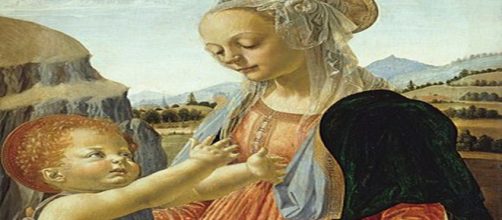It's an old story that female artists got left out of history books. Even wives of modern superstars stood in their shadows. Jackson Pollock's wife Lee Krasner and Willem de Kooning's wife Elaine de Kooning come to mind. Now comes a twist in that story, courtesy of London's National Gallery.
Unvarnished truth
In an exhibit titled "Verrocchio, Sculptor, and Painter of Renaissance Florence." the National Gallery demonstrates that while scholars have spotlighted Leonardo da Vinci since the Renaissance, his peers like Verrocchio have sat in the half-light.
The museum seeks to set the record straight. One of the revelations is that Verrocchio was Da Vinci's art teacher for 10 years. What's more, what he taught hadn't been experienced before - sculpture in the round, intended to be viewed from all sides.
Inside information
Exhibit curator Andrew Butterfield, who authored the book "The Sculptures of Andrea del Verrocchio," told The Observer, London's Sunday newspaper, "If you went into Verrocchio's workshop in the 1400s, quite literally in the space the size of a one-bedroom apartment in New York, you would have in one corner, Leonardo...Sandro Botticelli was also there. So, that relatively small space you had all these budding geniuses. The place was some sort of laboratory for the art of the High Renaissance." And Verrochio deserves credit for that.
Juicy tidbit
Butterfield also points out that because there was so much togetherness in Verrocchio's studio, it's hard for scholars to figure out who did what. Left out of the National Gallery news, however, are the disclosures about Verrocchio from Giorgio Vasari, art historian during the Renaissance. He wrote, for example, that for the painting he was best known for - The Baptism of Chris - , he shared credit with Da Vinci because his student had added an angel in one corner.
Making history
In Vasari's tome, "Lives of the Most Excellent Painters, Sculptors" he also observed that Verrocchio was so taken with the naturalism in Da Vinci's figures that he wanted to give up painting. Clearly, the man was too modest.
You only have to look at his rendition of Madonna and Child to see how he endowed her with such sublime gentleness. that it's all you see.
Playing fair
So, even though Vasari, like other historians, swooned over Da Vinci's work, he included in his book several drawings of Verrocchi's female heads, commenting on their “lovely expressions and hair which Leonardo da Vinci was always imitating for their beauty.“ Vasari saw that respect between these two artists was mutual, which explains why Verrocchio let Da Vinci paint part of his most famous picture.
Winning strategy
But wait, Verrocchio wasn't magnanimous when it came to artists outside his studio sharing in his work. Vasari tells of a sculptor commissioned to share io work on an equestrian statue of the Venetian hero Bartolommeo Colleoni. Verrocchio already made the model and on hearing that Vellano da Padova was to work with him, he broke the model in a rage. The patron got the message and gave the commission solely to him.


